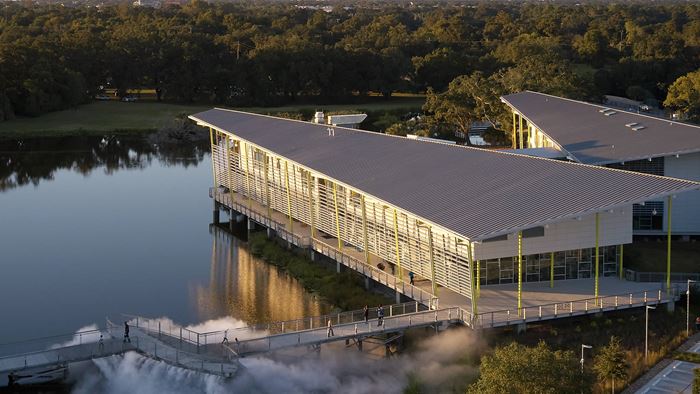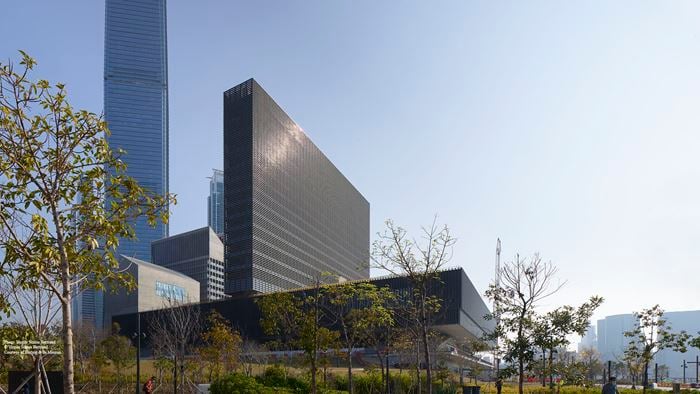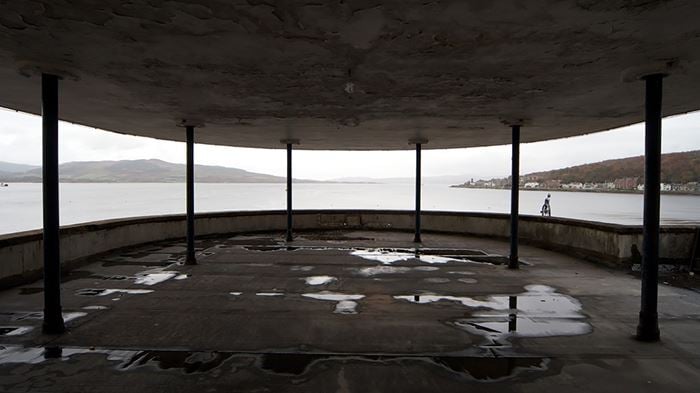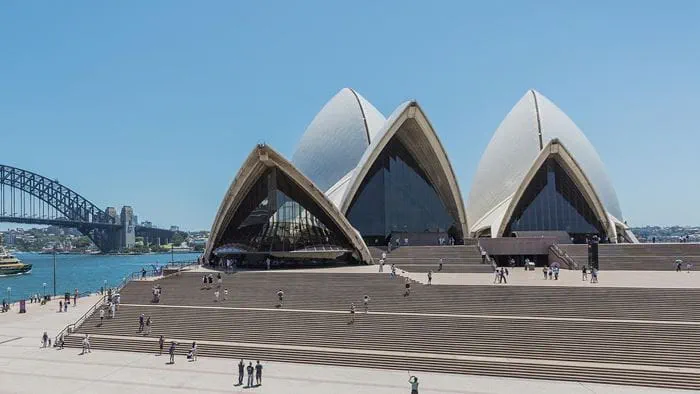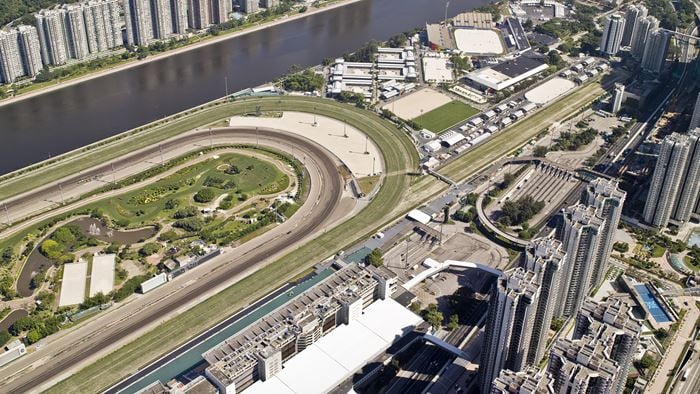The Windermere Jetty Museum of Boats, Steam and Stories provides exhibition spaces for the display of a restored collection of boats ranging from 18th and 19th century steamboats and yachts, to a collection of 20th century motorboats, rowing boats and canoes. A wet dock allows the display of boats on water within the museum and offer boating excursions on the lake. A Conservation Workshop linked to a boat yard and slipway, provides the client with the facilities to conserve and protect the collection.
We worked in collaboration with Carmody Groarke Architects to design a collection of buildings which allows for the exhibition and restoration of the boats. The focus of the design was to develop a structure which was both efficient and complementary to the architecture and the picturesque setting. The buildings and landscape also needed to provide robustness against the climate and an ability to support and provide hoist locations to allow the client to manoeuvre and display the collection of steamboats and watercraft of significant size and weight.
Emphasis is placed on the visitor experience and creating a strong connection between people, boats and water. Our engineering design team has worked closely with the architects, client’s curators and the interpretation planners to ensure that the building offers opportunities to enhance the interpretation of the collection. This close collaboration has resulted in a high quality, co-ordinated and engaging design.
The building also incorporates a temporary exhibition space that provides a close control internal environment of the humidity and temperature range to government indemnity standards, to allow touring exhibitions to be shown within the museum.
The project was won through an open international competition organised by the Royal Institute of British Architects.
Project Summary
1st contemporary building on the lakeshore for over 50 years
75%of the predicted 100,000 annual visitors are expected to arrive by water
100%of the heating demand is supplied by a water source heat pump in the lake
© Christian Richters
Building in and around water
Building in and around the lake proved a challenge to our design team. The building levels are set to withstand a 100 year flood scenario requiring us to raise site levels and reform the lake edge sheet pile wall. The Conservation Workshop sits in the flood plain, due to its relationship with the slipway, so materials and detailing within the building were picked for their durability and the ease to source replacements. Services are placed at high levels throughout.
Large cantilevered overhangs protect window and door openings from the Cumbrian weather and hidden gutters are sized for the annual rainfall in the lakes.
Sustainability measures
The building has been designed to be climate change resilient and to minimise energy consumption during its operation. Natural ventilation has been employed within the majority of the building and an intelligent control system monitors the internal air quality and temperature to maintain comfortable internal conditions, optimising internal performance and comfort. Underfloor heating throughout the galleries and public areas provides 100% of the demand. The environmental systems in the gallery have been designed in direct response to the collection and not to conventional standards, an approach we pioneered at the Medieval & Renaissance Galleries at the V&A.
The building utilises its proximity to Lake Windermere by using a lake source heat pump to deliver heating and hot water. The heat pump draws water from the lake and circulates it through three large radiator panels installed below the main jetty within the lake. Reed beds adjacent to the building provide natural treatment and attenuation of surface water run off prior to discharging it to the lake. Low water use appliances have been specified throughout.
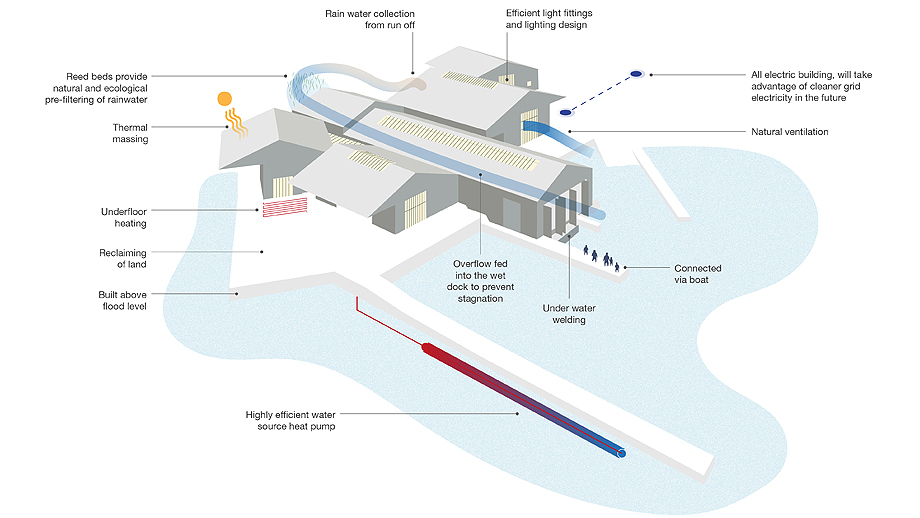
© Christian Richters
Working with stakeholders
The lakeshore is both ecologically and archaeologically sensitive, with historic features that the local authority were understandably keen to preserve. Working closely with Carmody Groarke we helped secure a unanimous planning decision. This was the culmination of over three years of consultation with multiple stakeholders including the National Park Authority, the Environment Agency and Natural England.
The collection of steamboats and watercraft are of significant size and weight, which required a detailed collection logistics strategy and a considered approach to the future flexibility of the museum.
Actively engaging visitors
The museum celebrates life on the lake and actively involves visitors in the crafts and traditions that built the boats. A wet dock allows the display of boats on the water and a new Conservation Workshop facilitates an active conservation programme for the boats, allowing visitors to observe and engage with the process.
“The design team have created an extraordinary museum which connects visitors with the collection, to the lake and with the wider Lake District landscape telling the incredible stories of those to whom Windermere has been so important. ” Rhian Harris Chief Executive, Lakeland Arts
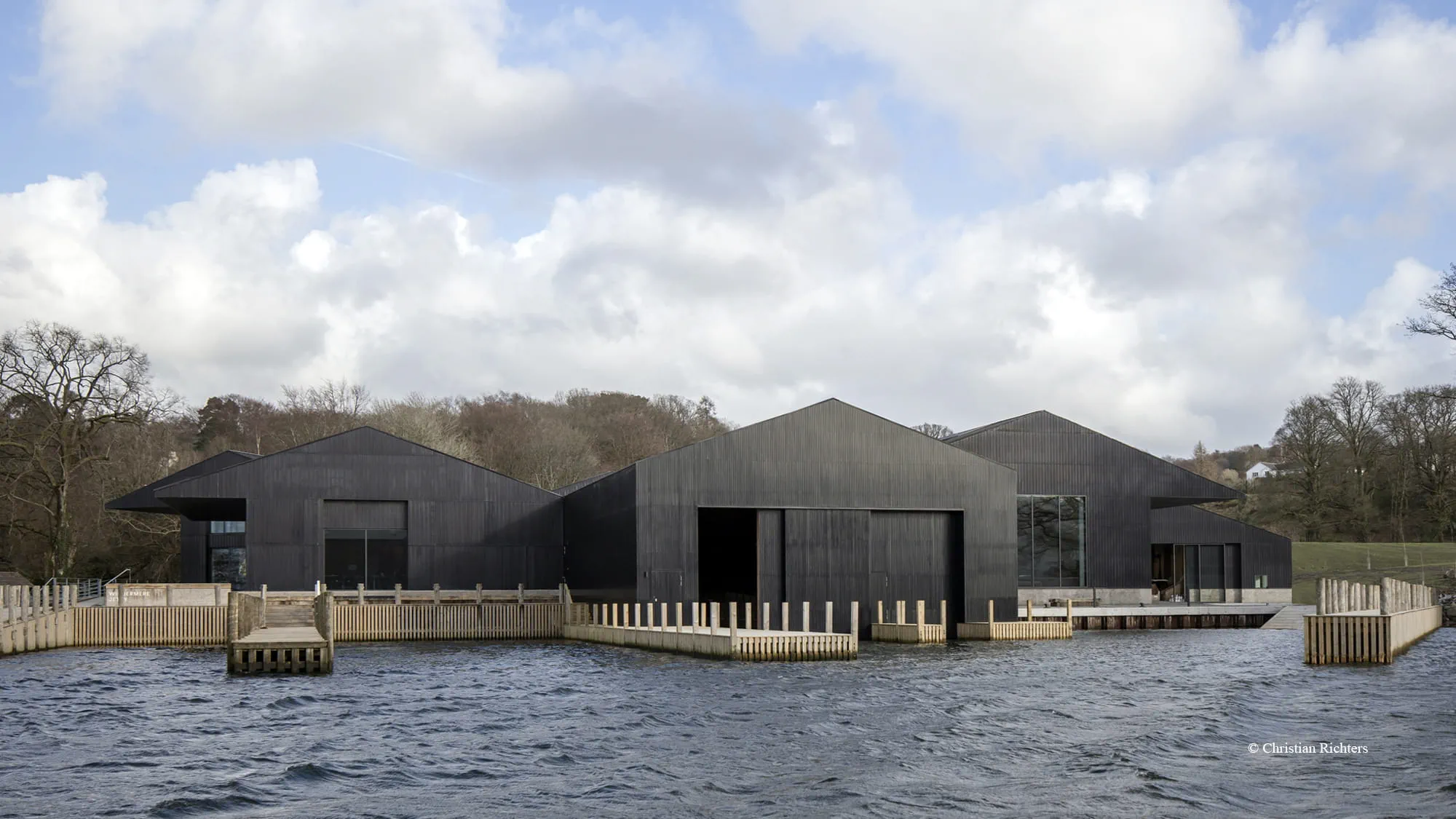 ;
;

